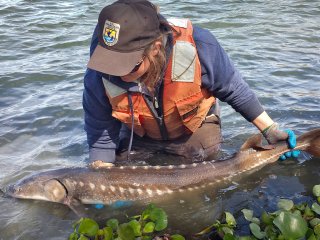Implementing the Polychlorinated Biphenyls (PCBs) Total Maximum Daily Load (TMDL)
Return to: Program Priorities | About the Program
Why is this a San Francisco Bay Program Priority?

Polychlorinated biphenyl (PCB) concentrations in the water, sediments, and biota of the San Francisco Bay have led to a fish consumption advisory and the bay’s designation as impaired under the Clean Water Act’s 303(d) list. In response, the San Francisco Bay Regional Water Quality Control Board (Water Board) established a total maximum daily load (TMDL), otherwise known as a “pollution diet,” to identify PCB sources and restore water quality, highlighting urban stormwater systems as a major contributor to PCBs in the bay.
To address the needed reductions of PCB loads in stormwater in the San Francisco Bay, over 100 municipalities formed the Bay Area Municipal Stormwater Collaborative (BAMSC). BAMSC works regionally on permit compliance and implements studies and projects aimed at reducing PCB levels and reports their progress to the Water Board. Funding from the San Francisco Bay Program supports BAMSC's TMDL work to ensure it remains fishable for recreational and subsistence fishers and Tribal communities.
